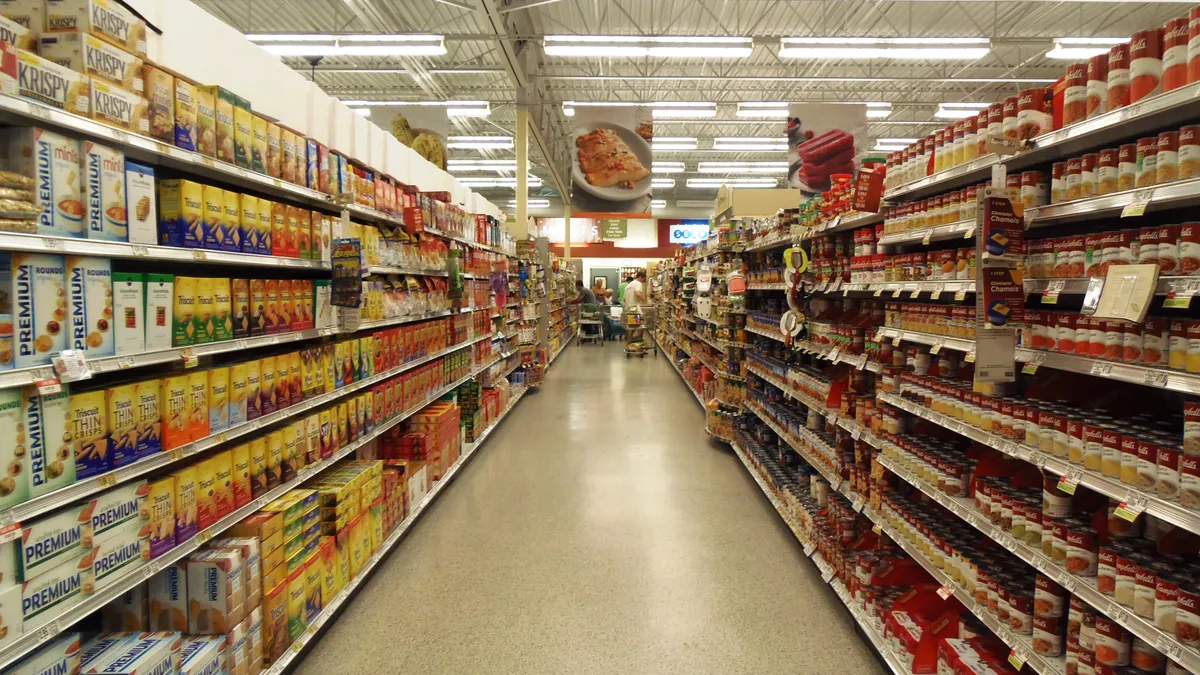Dan Wilkinson is the chief commercial officer of 1WorldSync, with more than 20 years of strategic business development and general management experience. Dan plays a key part in developing 1WorldSync's strategic direction and is responsible for ensuring that its clients derive maximum value from its services and solutions.
Amazon and Whole Foods. Walmart and Jet.com. These companies are all making a play for, well, everything.
Whether they’re aware of it or not, these top retailers are all striving for the same thing – an endless aisle. By blurring the lines between their physical and digital stores, retailers can ensure inventory is seamlessly accessed and orders are fulfilled no matter the channel consumers are shopping.
Companies like Amazon are pursuing acquisitions with this very model in mind. By acquiring Whole Foods, Amazon opened itself up to a broader section of the consumables market. This expanded inventory is great, but it also puts added pressure on Amazon to develop a fulfilment strategy that can handle disparate inventory across all channels.
Amazon and others have chosen drop shipping as their preferred solution, and for good reason. If a retailer is out of stock for a certain product, it can simply order more inventory direct from the supplier and have those products sent straight to the consumer’s door. Using this approach, retailers can deliver on every last order. And, because the customer never interacts with the supplier, the retailer maintains ownership over the relationship all the way to final purchase.
Setting your company apart with logistics
When everyone is doing the same thing, those that do it best will stand out. This is the same concept that leads shoppers to prefer one grocer versus another. When the specific product is the same across all shopping destinations, consumers’ purchasing power is often influenced by logistical factors such as speed and convenience.
Facilitating the easiest and most enjoyable experience centers on two logistical questions:
-
How quickly and easily can people purchase and receive goods?
-
How can retailers streamline this process for shoppers?
Most retailers know the answer to this first question. Simply talking to customers, or even going through the purchasing process internally, can reveal hiccups in the fulfillment experience. The second question is a bit trickier to answer, and shows where retailers should be spending most of their time.
Accurate, robust and current product content
Product content and data may not be what first comes to mind when thinking of logistics, but without consistent information at every touchpoint, it’s nearly impossible to maintain the endless aisle model. Integrating inventory across all channels remains a huge challenge for many retailers, and when information isn’t consistent, retailers run the risk of taking on orders they cannot fulfill. Likewise, inaccurate or incomplete product data creates a disjointed experience for shoppers.
Overcoming this challenge starts with a product content solution that allows retailers to seamlessly exchange consistent and complete product information across all channels. Acting as a single source of truth and operating across the cloud, these solutions enable the endless aisle by guaranteeing accurate product information anywhere, anytime and regardless of if the product is shopping from the retailer or supplier.
Retailers should then revisit the tools in their arsenal and ensure they support shoppers’ top needs. For example, transparency is a top concern among consumers when buying a product. Particularly in the food and CPG industry, consumers expect to see information from every stage of a product’s lifecycle, from when it’s being shipped to where it’s coming from and when it will arrive.
If retailers are not providing tools that promote inventory transparency in real time, they’re not streamlining this process for shoppers. For example, a package tracking number is a service all retailers should be offering at this point. Retailers can then begin to differentiate themselves with more advanced offerings. This includes more diverse fulfillment options like order online, pickup in store; or adding in new communication avenues like SMS order delivery updates.
Additions like SMS not only connect consumers with more information, but they leverage devices shoppers already have – smartphones – to deliver that information in a way that feels natural. Likewise, for retailers interested in the endless aisle, more robust logistical capabilities remove burdens in two key ways.
First, leading logistics tools can automate much of the information exchange between retailers and their customers, freeing up internal teams to take on other bottom-line needs. And second, these tools put control in the hands of consumers. Once a retailer has established something like a package tracking number, shoppers can seek out delivery information on their own terms, as needed. When consumers are in control of the frequency and depth of their transparency into inventory and delivery logistics, retailers streamline the process for all parties involved.
In a never-ending race to maximize customer satisfaction, retailers that can master the endless aisle will come out on top.
















